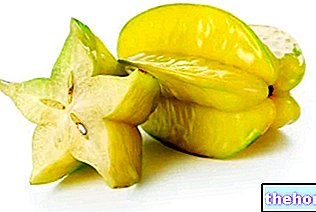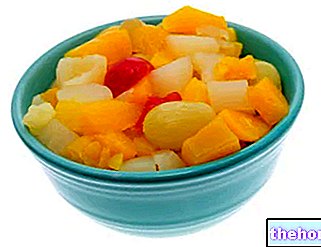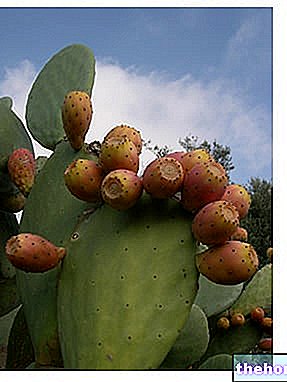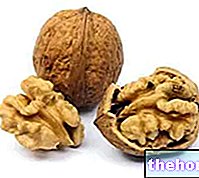See also: jujube broth
Ziziphus zizyphus
Ziziphus zizyphus is the Giuggiole plant, also known as Natsume, Tsao or more simply Chinese date.

There are conflicting opinions about the origin of the jujube: some authors believe that the plant is native to Asia - where it is still intensively cultivated - others are convinced that the jujube is native to northern Africa and that it was only subsequently exported to the East. Nonetheless, all biologists agree that the jujube plant has now been cultivated for over 4,000 years.
Botanical description
The jujube plant has particular and unmistakable thorny and zigzagging branches, with a reddish or brownish color. The bark is very wrinkled. The leaves, bright green, are leathery, alternate and ovate-oblong, with an imprecise, almost serrated edge; the flowers, candid white, sometimes greenish, are gathered in small inflorescences. The edible and fleshy fruits are jujubes (called "zizoea" and "zizoa" in the dialects of northern Italy), these fruits are as big as an "olive, have yellowish pulp, brownish-brown skin and sweet taste.

The seeds have a resistant and hard endocarp: for this reason, they struggle to germinate. In order to obviate this inconvenience, it is recommended to cut the tips of the seed with appropriate scissors, to favor the penetration of soil moisture and the consequent germination of the seed.
Jujube seeds should not be eaten since, in addition to their particularly pungent structure, they contain toxic glycosides.
Active principles
The jujube fruits are also used for phytotherapeutic purposes: after harvesting in September-October, the jujubes are subjected to drying. In addition to a modest quantity of sugars, pectin and mucilage, the jujube fruits also contain:
- Anthraquinones
- Tannins
- Zizifusin: bisbenzyliso-quinolinic alkaloid
- Daehuciclopeptide-I: cyclopeptide substances
- Ascorbic acid
- Flavonoids (suvertisin)
- Saponosides with tetracyclic triterpene genin
[adapted from Reasoned dictionary of herbal medicine and phytotherapy, by A. Bruni]
Medical-phytotherapeutic uses
In oriental medicine, the therapeutic properties of jujubes are used to alleviate the symptoms of depression, physical fatigue, asthenia, irritability and nervousness. It seems that these presumed potentialities of jujubes, attributed to the fruits by oriental cultures, find a certain scientific confirmation, in particular for the sedative and hypnotic activities (rendered by the saponosides).
The seeds (not the fruits) of the species Zizyphus spinosa they proved to be particularly appropriate for combating states of insomnia and nervousness.
In Chinese medicine, jujubes are used as a tonic to reduce anxiety accompanied by palpitations and neurasthenia.
Due to the presence of anthraquinones, jujubes boast a mild laxative effect.
The use of jujube fruits to relieve inflammation of the throat, bronchitis, colds and hoarseness certainly cannot be forgotten.
It seems that the excessive consumption of jujube fruits can inhibit sexual desire: however, there are no reliable demonstrations to support the theory.
Food uses
The small fruits of the jujube are edible and sweet; these can also be used to make jams, syrups and liqueurs, including the well-known jujube broth.
Summary
Giuggiolo: in short
Jujube plant
- Botanical name: Ziziphus zizyphus
- Common name: jujube
- Synonyms: Natsume, Tsao, Chinese date
- Family: Rhamnaceae
Jujube: botanical description
- Branches: thorny and zigzagging, reddish or brownish in color
- Bark: very wrinkled
- Leaves: bright green, leathery, alternate and ovate-oblong with an imprecise edge
- Flowers: candid white, sometimes greenish color, gathered in small inflorescences
- Fruits: edible and fleshy (jujubes)
- Pulp: yellowish
- Brownish-brownish skin
- Taste: sweet
- Fruit picking: at the end of the summer months
- Temperatures: warm ones are ideal, but it also resists very low temperatures (-15 ° c)
- Seeds: tough and tough endocarp
Giuggiolo: main constituents
- Sugar
- Pectin
- Mucilage
- Anthraquinones
- Tannins
- Zizifusin: bisbenzyliso-quinolinic alkaloid
- Daehuciclopeptide-I: cyclopeptide substances
- Ascorbic acid
- Flavonoids (suvertisin)
- Saponosides with tetracyclic triterpene genin
Giuggiolo: medical-phytotherapeutic uses
- Oriental medicine: jujubes relieve symptoms related to depression, physical fatigue, asthenia, irritability and nervousness
- Scientific evidence: sedative and hypnotic activities (rendered by saponosides) of jujubes demonstrated
- Seeds of the species Zizyphus spinosa: useful for combating states of insomnia and nervousness
- Chinese medicine: jujubes used to produce tonics against anxiety states accompanied by palpitations and neurasthenia
- Mild laxative effect (anthraquinones)
- Useful against inflammation of the throat, bronchitis, colds and hoarseness.
- Excessive consumption of jujube fruits: inhibition of sexual desire
Giuggiolo: food uses
Consumption of fresh fruits
Jams
Syrups
liqueurs (jujube broth)
Other Foods - Fruits Apricots Sour cherries Cashews Pineapple Watermelon Orange Avocado Banana Persimmon Persimmons Apple Chestnuts Cedar Cherries Coconut Watermelon Dates Feijoa Fig of India Figs Strawberries Berries Passion fruit (Maracujà, Granadilla) Jujube Kiwi Raspberries Coconut milk Lemons Almond milk Mango Apples Quinces Pomegranate Melon Blackberries Mustard Medlar Olives Taggiasca Olives Fermented Papaya Pears Peaches Plantains (Cooking Bananas) Pomelo Grapefruit Pink Grapefruit Plums, prunes Fruit juices and fruit juices Grape juice Plums Grapes Sultanas and Raisins OTHER ITEMS FRUIT Categories Food Alcoholics Meat Cereals and derivatives Sweeteners Sweets Offal Fruit Dried fruit Milk and derivatives Legumes Oils and fats Fish and fishery products Salami Spices Vegetables Health recipes Appetizers Bread, Pizza and Brioche First courses Second courses Vegetables and Salads Sweets and Desserts Ice cream and sorbets Syrups, liqueurs and grappas Prepare Basic tions ---- In the kitchen with leftovers Carnival recipes Christmas recipes Light diet recipes Women's, mom's and dad's day recipes Functional recipes International recipes Easter recipes Gluten-free recipes Diabetic recipes Holiday recipes Valentine's Day recipes Vegetarians Protein recipes Regional recipes Vegan recipes


-propriet-nutrizionali.jpg)

























